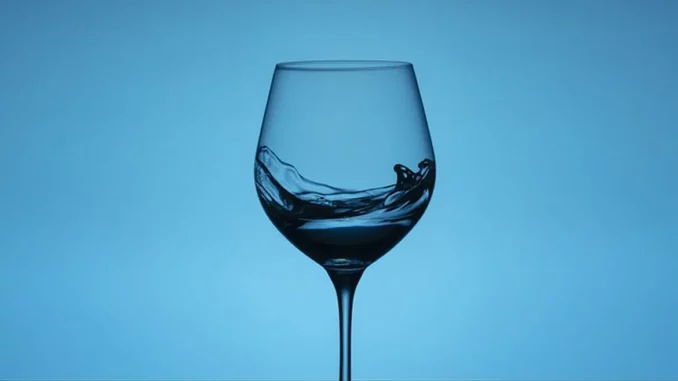
As a journalist, I recently had the pleasure of interviewing Robert Ashton, a seasoned sommelier with over two decades of experience in the wine industry. Robert’s insights into the art of serving wine were not only enlightening but also practical, making them a perfect fit for anyone looking to elevate their wine-serving skills.
During our conversation, Robert emphasised three key principles: serve white wines immediately, let red wines sit at room temperature for about 30 minutes before serving, and consider investing in a wine refrigerator. His guidance was a blend of tradition and modern convenience, offering a roadmap for both novice and seasoned wine enthusiasts.
Serve White Wines Immediately
The first and perhaps most crucial tip Robert shared was the importance of serving white wines immediately after chilling them. “White wines, especially the lighter and dry varieties like Sauvignon Blanc or Pinot Grigio, need to be served chilled to retain their fresh, acidic notes,” he explained. “I recommend a serving temperature of around 45–49°F for these wines. This ensures that their vibrant flavours and aromas are preserved.”
To achieve this, Robert suggests placing the white wine in the fridge for about an hour and a half before serving. “If you’re pressed for time, a bucket filled with equal parts ice and water can chill the wine in about 20 minutes,” he added. This quick chilling method is particularly useful for impromptu gatherings or when you’ve simply forgotten to put the wine in the fridge ahead of time.
Let Your Reds Sit at Room Temperature
When it comes to red wines, Robert’s advice was clear: patience is key. “Red wines, especially the full-bodied ones like Cabernet Sauvignon or Malbec, should be allowed to sit at room temperature for about 30 minutes before serving,” he said. “This step is crucial as it brings out the wine’s complex flavours and aromas, which can be muted if served too cold.”
Robert explained that the ideal serving temperature for red wines varies depending on their body and style. Light- to medium-bodied reds like Pinot Noir are best served at around 54–60°F, while full-bodied reds should be served slightly warmer, at 60–65°F. To achieve these temperatures, he recommends taking the red wine out of the fridge about 25 to 60 minutes before serving, depending on the specific wine and the ambient temperature.
The Wisdom of a Wine Refrigerator
For those serious about their wine, Robert strongly advocates for investing in a wine refrigerator. “A wine refrigerator is a wise choice because it helps maintain your wines at consistent temperatures, closer to their ideal serving conditions,” he noted. “Some models even offer varied cooling zones, allowing you to store red wines, white wines, and sparkling wines at their respective optimal temperatures.”
Robert shared his personal experience, stating, “Having a wine refrigerator has been a game-changer for me. Not only does it keep my wines at the right temperature, but it also makes it easier to manage my collection.” He pointed out that, for those without a wine fridge, the darkest, coolest spot in your house with a consistent temperature could serve as an alternative storage solution.
Practical Tips and Tricks
Throughout our conversation, Robert sprinkled in several practical tips that are easy to implement. For instance, he mentioned, “If you don’t have ice to chill your wine, you can wrap the bottle in a damp paper towel and place it in the freezer for about 20 minutes. Just make sure to set a timer to avoid the risk of the bottle breaking.”
He also stressed the importance of using proper stemware. “The right glass can make a significant difference in how you experience a wine,” he said. For white wines, a stemmed glass with a U-shaped bowl is ideal as it captures and distributes the wine’s floral and fruity aromas. For red wines, a wider-bowled glass is better suited, as it allows the wine to breathe and balances its complex flavours.
Decanting and Aerating
The topic of decanting and aerating wines also came up during our discussion. “Decanting is essential for young, tannic reds and old-vintage wines,” Robert explained. “It helps to soften the tannins and brings out secondary characteristics.” He recommended decanting these wines for about 30 minutes before serving.
On the other hand, aeration is more suitable for bold, young wines. “Aeration devices can speed up the process, providing results in minutes rather than half an hour,” he said. However, he cautioned against using aerators for delicate aged wines, as they can be too harsh. “Decanting is much more delicate compared to aeration. For older wines, always opt to decant.”
Conclusion
Robert Ashton’s expertise and practical advice provide a comprehensive guide to serving wine perfectly. By following his tips—serving white wines immediately, letting red wines sit at room temperature, and considering the investment in a wine refrigerator—anyone can enhance their wine-serving skills and impress their guests.
Whether you’re hosting a dinner party or simply enjoying a quiet evening at home, these insights will help you serve wine like a professional. So next time you uncork a bottle, remember Robert’s sage advice and savour the enhanced flavours and aromas of your perfectly served wine.
Harry


Be the first to comment